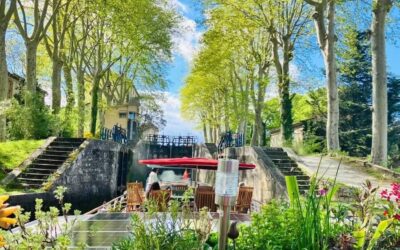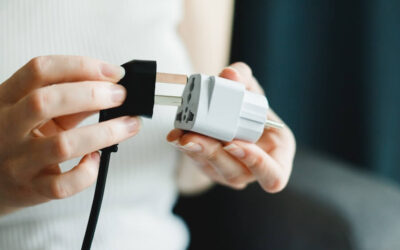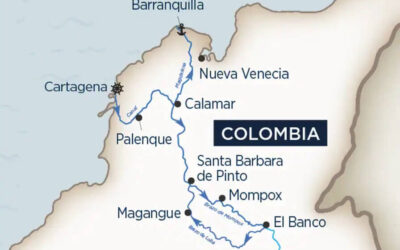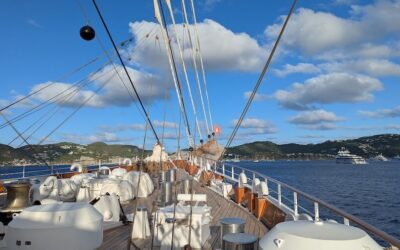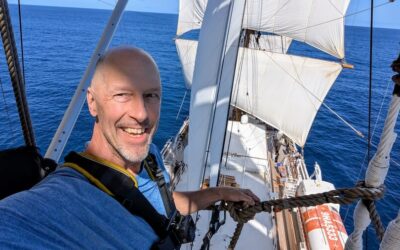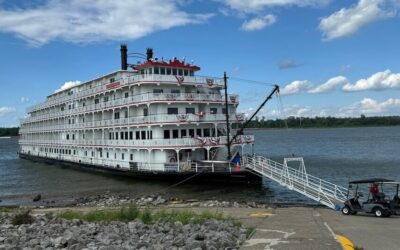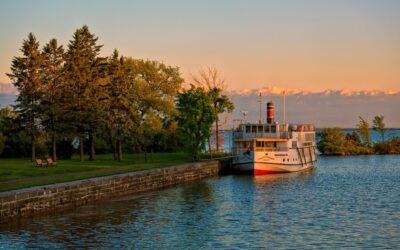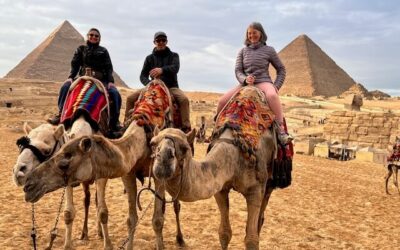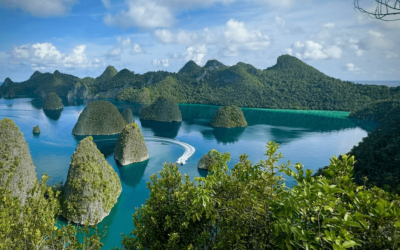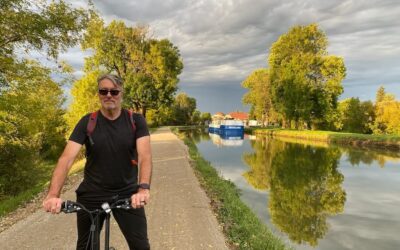Australia’s Remote Kimberley Coast
By Ted Scull.
Married as I am to an Australian — a Queenslander, to be more specific — we trek out to the old country with certain regularity. After de rigueur family time, we then choose an exciting new domestic destination to expand our horizons in a country nearly as large as the U.S. but with less than seven percent of the population.
My wife wanted to explore the Top End, that is Australia’s upper reaches, located well within the tropic zone that spreads to both sides of Darwin, the Northern Territory’s capital city. I wanted to add a cruise for part of the three weeks we had set aside for traveling.
Top End Geography
In Australia, most people live along the coasts, from Sydney north to Cairns on the east coast; between Melbourne and Adelaide in the south; and to either side of Perth on the west.
The Top End, up north, is by far the least populated with hundreds of miles of coastline and vast inland regions virtually devoid of human presence.
This is the Outback in its most dramatic presentation, and its considerable delights are poorly appreciated even by the native Aussies. Some destinations we would reach weren’t even mapped when my wife was a schoolgirl.
East of Darwin is known as Arnhem Land, Aboriginal territory with restricted access, and to the west is the Kimberley, a distinctive geological land mass that collided with the Australian continent some 1.8 billion years ago. Uplift and tropical weathering of the sandstone and volcanic rocks have created fantastic landscapes of brilliant colors seen nowhere else. Rivers cut deep gorges, and waterfalls tumble off high plateaus into the Timor Sea.
Caves perched a couple of hundred feet up rocky faces contain Aboriginal rock art dating from a few thousand to as many as 50,000 years ago — the upper range arguably the oldest depictions of human figures known to man. Shoreline mangroves harbor saltwater crocodiles, sea turtles, poisonous sea snakes, and exotic birds. Tides range over 30 feet, the second highest in the world. Road access is primitive or non-existent.
Several small expedition-style cruise lines cruise the remote Kimberley Coast during “The Dry” — the relatively cool Austral winter season of little humidity and mostly blue skies. We chose Orion Expedition Cruises (now Lindblad Expeditions) operating a stabilized 4,000-gross-ton ship. The new renamed National Geographic Orion takes up to 106 passengers, and while the ship is currently operating elsewhere, Coral Expeditions’ Coral Princess makes these Kimberley Coast 10-day March to September voyages between Darwin and Broome, the latter an old pearling port in Western Australia.
Built in Germany in 2003, Orion is designed to handle the world’s roughest seas — happily not where we were headed, but from New Zealand south to Antarctica (and now more often from Argentina south to the White Continent).
On our cruise to the Kimberley coast, passengers were mostly Australians, escaping winter in Victoria and New South Wales. A more international English-speaking mix is found on better known destinations such as Papua New Guinea, Melanesia, Southeast Asia and New Zealand’s South Island. The ship’s captain was German and the crew mostly Filipinos.
The City of Darwin
We arrived in Darwin two days early to see the sights. With a population of fewer than 100,000, the modern city sits atop a plateau overlooking the Timor Sea and serves as a base for cruises, trips into the Outback and to the nearby Indonesian islands. The better hotels look across a leafy cliff-side park to the sea, and one block inland, an arcaded street offers varied restaurants and stores selling Australian and Aboriginal art and crafts as well as cultured pearls farmed locally along the coast.
The Japanese bombed Darwin 64 times during World War II, and there are museums and memorials dedicated to wartime defenses, aviation and naval history. The Darwin Botanical Gardens, within walking distance of the center, spreads over 105 acres replete with palms, orchids, boab trees and mangroves.
At the edge of town and accessed by bus or taxi, the splendid Museum and Art Gallery Of The North Territory includes Aboriginal and Indonesian art and natural history exhibits of preserved Australian birds, mammals, and exotic reptiles and spiders that will send chills down your spine. Films and photographs tell the story of Cyclone Tracy, a Christmas Eve 1974 storm that virtually leveled the city.
Introducing the Orion
We awoke early on sailing day to catch the Orion sliding by our balcony to dock less than a mile away. Embarking in mid-afternoon, we found our big-windowed cabin attractive, roomy and with more than enough stowage space. Amenities included a flat screen TV with a good variety of programming, unlimited complimentary bottled water stocked in the fridge, fresh fruit, and a marble bath.
Shortly after settling in, four Australian naturalists, who during a daily pre-dinner ritual, briefed us about what lay ahead and would provide lively PowerPoint recaps of our day.
Ten Zodiacs, (stable rubber inflatables), carried us everywhere.
After an initial sea day, the first outing took us to the base of King George Falls, its pencil-thin waters plunging off a thousand-foot high cliff, with colored layers of rock intermingling with the horizontal black and white stone strata. The sprightlier amongst us clambered up a steep, rocky path to then peer over the edge to those bobbing below.
That afternoon, we landed on a sandy beach in Vansittart Bay, then traipsed a half-mile inland over tidal salt flats to a now wooded spot where an American DC3 had crashed landed in 1942 after the pilot became lost. Broken in two, and with both wings severed, the crew escaped without major injury and was rescued some five days later.
The highly entertaining evening cocktail-hour recaps led into convivial dinners either at an open sitting in the main restaurant or often out on deck, given the continuously fine weather that is typical of late July. A daily changing Degustation Menu was featured along with an additional page of alternatives. Given Australia’s top quality produce, meals were invariably a great treat, featuring delicious entrees such as slow-cooked lamb loin, olive-roasted chicken supreme, and grilled yellow-fin bream.
One night under the stars, a seafood extravaganza displayed freshly shucked oysters, grilled prawns, Moreton Bay bugs (a flavorful crustacean), blue swimmer crabs, red claw yabbies (a crayfish), and sea bass. On another occasion, an Australian barbecue produced steak, chicken, sausages and grilled barramundi (a reef fish). The impressive wine list features mostly Australian and New Zealand varieties, and we had no problem with that.
Dangers Lurk, Snagging a Big One & Aboriginal Art
We sailed westward onto the Hunter River, where our Zodiacs cruised amongst mangroves to spot saltwater crocodiles resting on mudflats. Their presence and the additional company of seasonal and highly poisonous box jellyfish, kept us out of the alluring tropical waters. However, a few tidal swimming holes at the base of freshwater falls provided a refreshing dip, once they had been thoroughly scouted out.
With a fast falling tide, water cascaded off Montgomery Reef, and at its edge we saw more crocodiles, sea turtles, lots of colorful fish ad the highly venomous olive sea snake.
Once or twice a day, a naturalist took a fishing party of four out to try their luck. Our boat caught and threw back bat fish, crimson sea bass, scarlet rock cod, Spanish flag, and a dangerous stone fish. My line hooked a 20-pound giant trevally (a good eating fish) and a 50- to 60-pound shark. I fought for an hour, triumphantly reeling it in only to have the line suddenly stream out again. In the end, the shark broke the light tackle, and I ended up with mighty sore muscles for the next two days.
Aboriginal art abounds in thousands of Outback locations, and at Raft Point, we hiked a couple hundred feet up a red limestone cliff to an overhanging cave where on the ceiling we marveled at other worldly whitish figures (spirits), painted with enormous black eyes, rectangular noses, no mouths, and heads surrounded by halo headdresses.
The aborigines claim that this so-called Wandjina style was drawn by creator beings of the Dreaming, while the Bradshaw or Gwion Gwion art was done by humans. That latter style, seen at other locations, depict humans often as stick figures accompanied by fish and other wildlife.
Not all mornings and afternoons had us piling into Zodiacs. Down times provided opportunities to read on deck and enjoy afternoon tea in the forward observation lounge. Lectures gave us lessons in Aboriginal art and why there are cassowaries, emus, wallabies, and wombats in Australia and nowhere else.
An exploratory cruise such as this one is a joyfully shared experience at meals, during social hours, in the Zodiacs, and ashore. And while most North Americans have led a life free from venom, Australians from every state seemed to have had brown snake, scorpion, or red back spider encounters in their own gardens. So rooting around the Kimberley may seem less dicey for Aussies than it is for Northern Hemisphere visitors.
Arriving at Broome & Driving Back
Disembarking from the Orion at Broome’s half-mile-long pier, designed to handle the huge tidal fluctuations, we had arrived at a town of about 11,000 originally founded on the pearling industry — once natural and now cultured. More recently, tourism arrived because beautiful Cable Beach, fronting on the Indian Ocean, offers safe swimming and attractive resorts draw visitors from Australia and abroad.
After a day’s pause we climbed into a four-wheel-drive vehicle and took to the two-lane Great Northern Highway for a week’s drive back to Darwin via the Bungle Bungles (Purnululu National Park), a UNESCO World Heritage Site. The park displays a fantastic landscape with thousands of orange-and-gray-striped beehive-shaped rock formations, plus deep intersecting gorges, riverbeds, and chasms to explore by foot.
We did come upon a brown snake, though it stretched barely a foot — no doubt, its much larger parents were lurking in the shadows nearby. Fortunately, our encounter was without incident; the Orion carries a doctor, but we were on our own in The Bungle Bungles.
Click here for more info on Lindblad Expeditions.
See also www.coralexpeditions.com.
Don’t miss a post about small-ship cruising, subscribe to QuirkyCruise.com for monthly updates & special offers!
© This article is protected by copyright, no part may be reproduced by any process without written permission from the author. All Rights Reserved. QuirkyCruise.com.

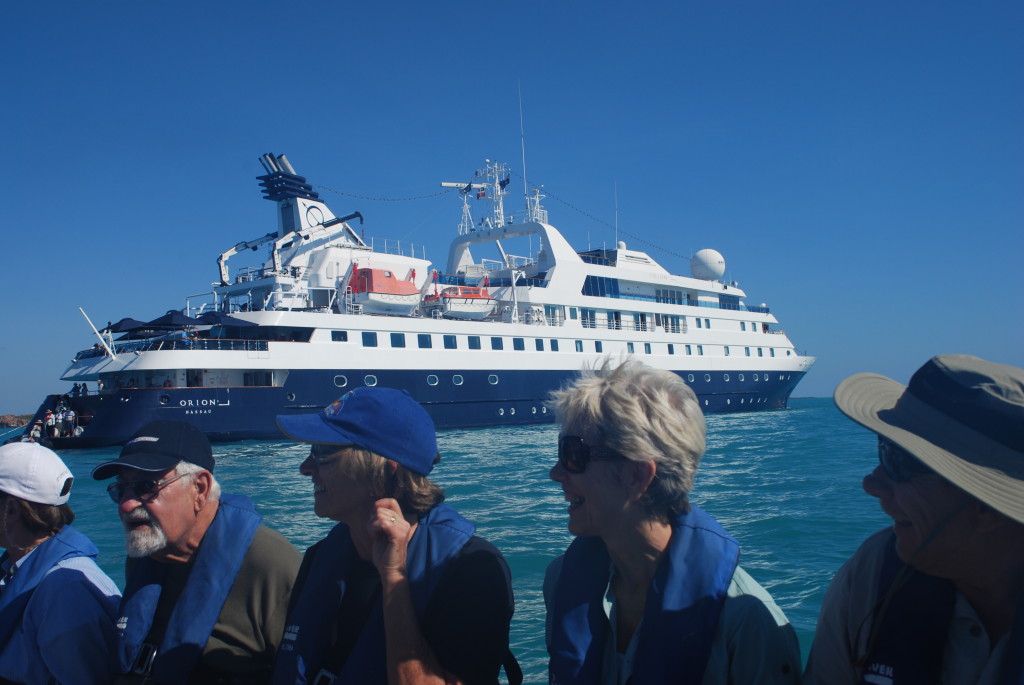
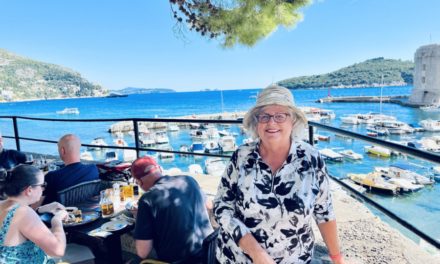
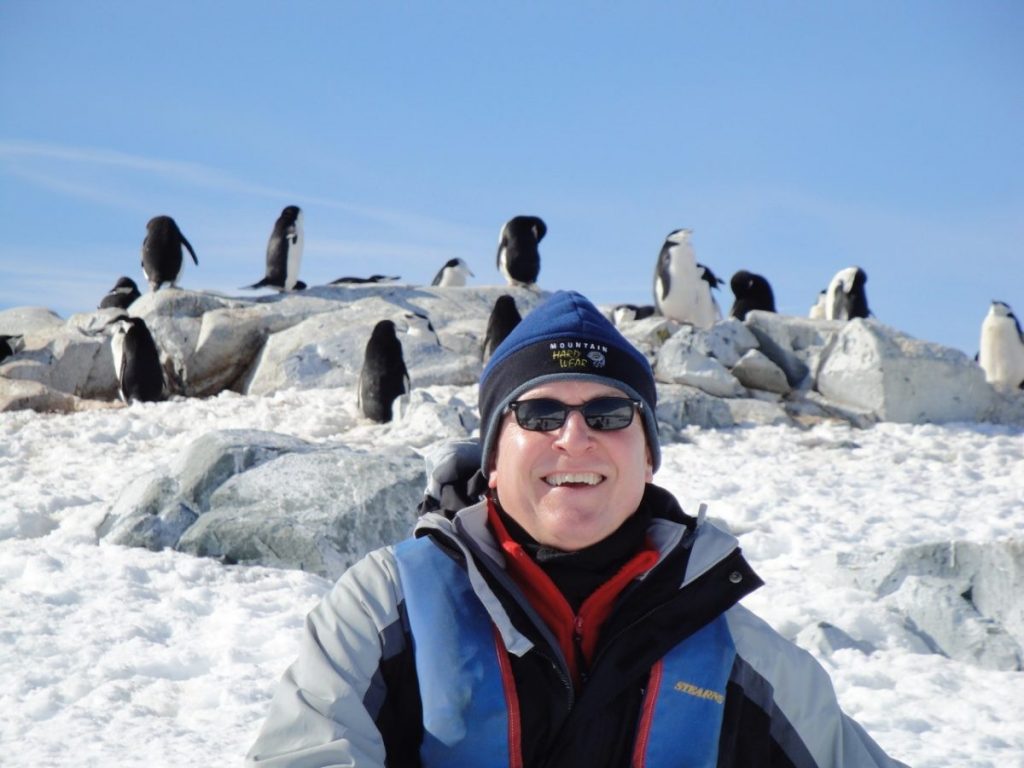
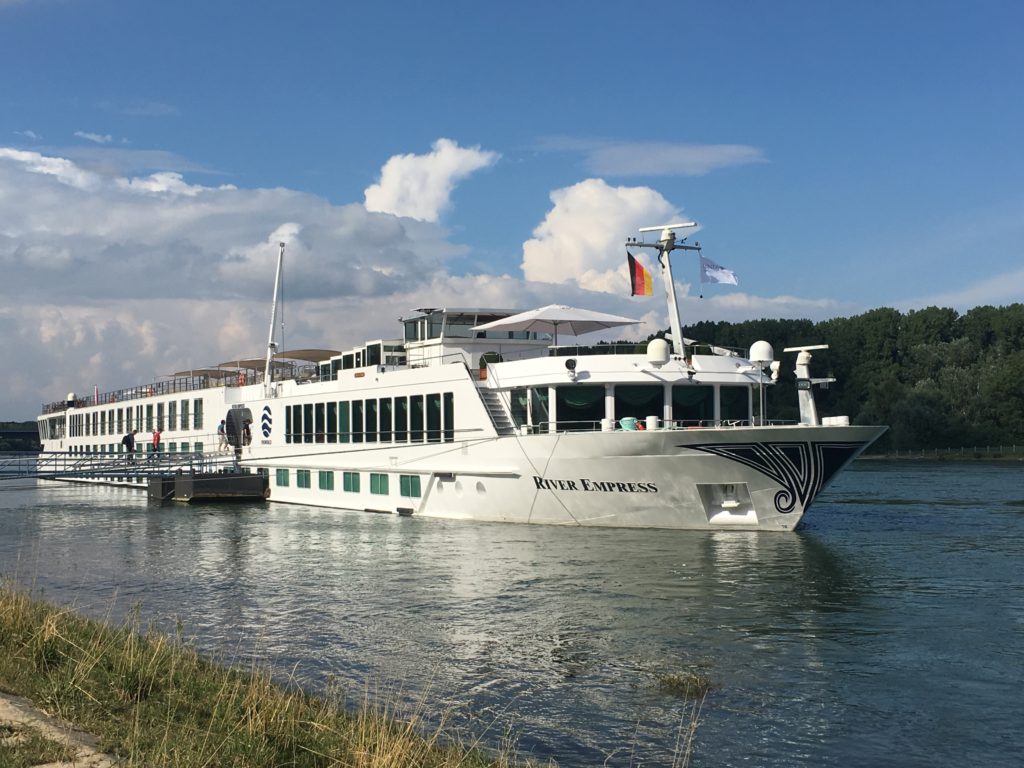
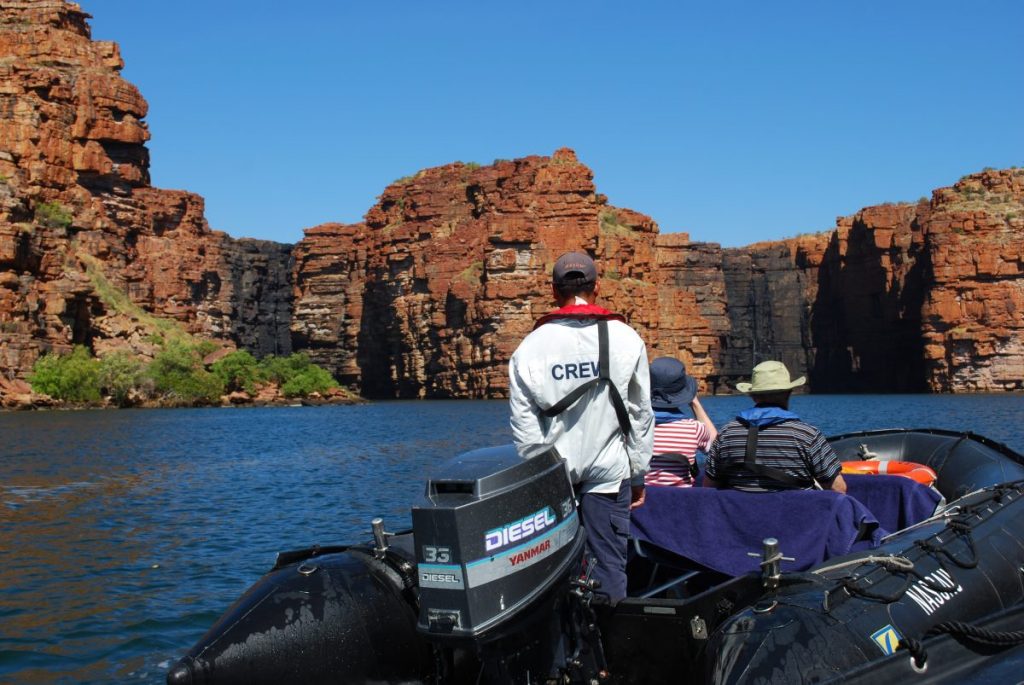
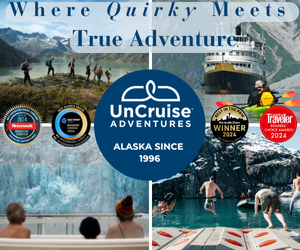
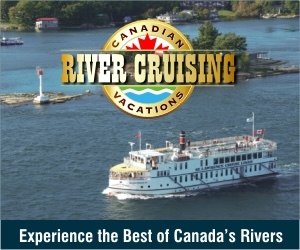

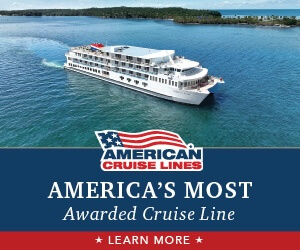
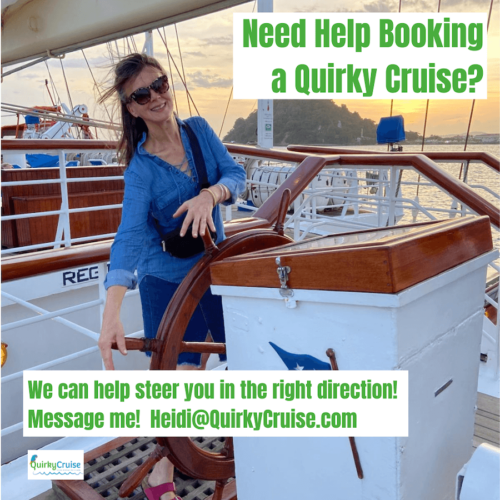
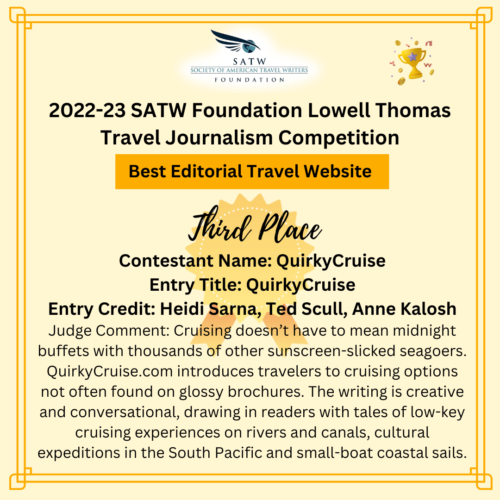
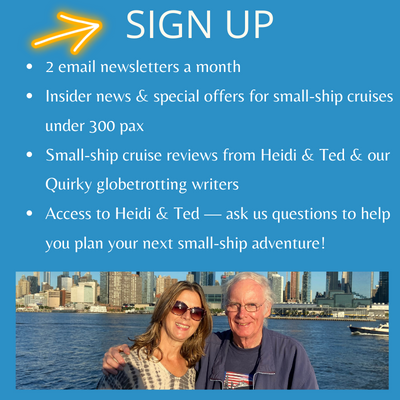

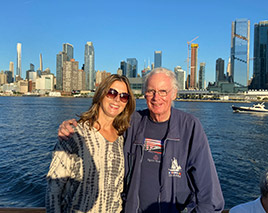 HEIDI SARNA
HEIDI SARNA
